Experts Weigh in on K-12 Coding & CS Resources
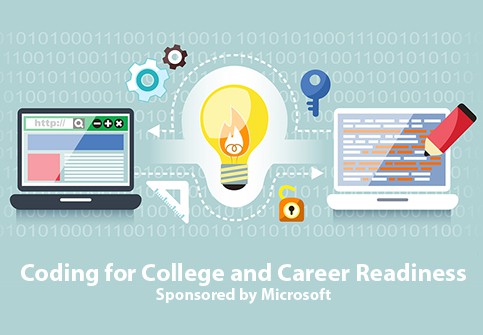
We’ve had some requests for recommendations for K-12 resources for teaching coding and computer science so we reached out to some folks in the know. Here’s a summary of what we learned:
Hadi Partovi is CEO of Code.org. He thinks Teaching kids to code is an economic and social justice issue. His site is packed with stats that make the case for coding–a good place to start.
Ed Lazowska, University of Washington, said, “To state the obvious, there is no substitute for a motivated, curious teacher who is empowered to do great things with his/her students. That said, CodeHS has been looking pretty good to us for an intro course.”
“What’s popular these days is the CS Principles course. These are part of a national effort to revise the Computer Science AP exam. UW has one of these prototype courses, but probably the Berkeley class is getting most traction.”
“David Malan’s CS50 intro course at Harvard is available online both directly and through edX. It’s a wonderful course, and David is a superb teacher. I know a number of (smart, motivated) middle teenagers who have loved this course online.”
Lazowska added, “The CS10K community is a good place to start.”
Albert Wenger, Union Square Ventures, said, “[As an investor] We of course like Codecademy and they have an afterschool kit.” He added, “Khan Academy also has some good courses.”
Fred Wilson (Wegner’s partner at USV) helped create the Academy for Software Engineering in NYC and they have an extensive curriculum.
“The NSF’s Exploring Computer Science is becoming a standard for the intro to CS class in most high schools. That is often followed by the new AP Principals and then the legacy AP CS class for those who want to really go deep,” said Wilson.
Rob Hutter, Managing Partner at Learn Capital, said: “As investors, we’re big believers in CodeHS — they use a special Javascript framework that Stanford University students have been using to learn computer science for years and have tuned it for K12 to let kids make games and other high interest interactions. But since it’s based on one of the most popular object-oriented languages in the real world, CodeHS skills have high transfer to genuine coding tasks. Also it’s getting great traction in schools because it’s built for the K12 market. Kansas City public schools just did a district-wide deal.”
Hutter also likes CodeNow. “They coordinate a volunteer army of software engineers to mobilize and train inner city students in code learning with a focus on disadvantaged populations. It’s not a curriculum but a service and they work directly on premise with high need districts. I couldn’t commend the team there higher for their dedication and mission.” CodeNow launched its six week Summer Fellowship on July 1 with a class of 20 outstanding NYC students getting smart at NYU.
Tim Brady, ImagineK12, said (that in addition to CodeHS, which he incubated), “You could also include: Scratch from MIT, Codecademy, and Khan Academy for offering Computer Science lessons, as well.” He added, “there is a pretty good list at Code.org.”
Nic Borg, Edmodo, said, “Two popular apps being used by teachers and students on the Edmodo platform are LearnStreet and ManyLabs’ Arduino Programmer.”
- LearnStreet provides teachers with tools, content and analytics for teaching JavaScript, Python and Ruby. Teachers can use the LearnStreet course content as well as a library of over 100 fun practice projects.
- ManyLabs’s provides an Arduino Programmer that enables students to write, save, and share Arduino programs. A Starter Kit is also available which includes an Arduino along with a collection of sensors and other devices for your classroom.
JD Hoye, National Acadamies Foundation (NAF) said, “NAF is currently developing a plan to update its Academy of Information Technology theme. We envision moving toward a set of pathways within the field, including computer science. We recently had a meeting with a number of top chief information officers from major high technology companies to get their advice on technology education. Their view was that programming and coding were important skills with excellent career prospects. Their guidance was to design a program that would initially excite students about developing games or other applications with less focus on computer languages. Once students are hooked on design and development, they would be more inclined to learn more about languages and programming.”
NAF’s research is led by Andy Rothstein. Like Brady, he’s a fan of Code.org, Scratch, and Khan Academy. Like Wilson, he likes Exploring Computer and the new AP Computer Science Principles, “This is being piloted now and will be released in a couple of years.” Alison Anderson, Getting Smart teacher blogger, likes Thimble the Mozilla Webmaker, “Thimble allows anyone to hack websites in a “sandbox” with a split screen–code on one side, what you’re creating on the other.” She added, “Webmaker has hacker projects that easily work for students. My students enjoyed it the most because they could see the results of their coding in real time and it allowed the students to interact and get creative with real websites, and seemed to work right at their ability level.”
Also, students at Umatilla High School in Oregon now have the chance to enroll in a new elective courses through Treehouse, with an extensive library of step-by-step video courses and training exercises, students earn badges by learning the skills needed to build apps and websites.”
Adam Renfro, of NC Virtual, said, “My kids have to use one of these each day: Code Avengers, Codeacademy, Code, Gamestar Mechanic, Scratch, Hackety Hack. And, for the iPad and iPhone Adam recommends: Hakitzu and Cargo-Bot, “I like Codeacademy the best so far,” said Renfro. “Hakitzu and another iPad app called Hopscotch are really great. If the kids don’t have access to a computer, they use the iPad,” Adam added, “also checkout Hacker Scouts,” noting that, “Coding is pretty much an after school event in most places.”
Tricia Moore, Reynoldsburg City Schools (Columbus OH), said their STEM elementary runs TopCoder competitions (details here). “Students participating in the First Robotics competition learned to program from Java for Dummies plus trial and error. No kidding.”
“At our STEM middle school, students who had demonstrated mastery in the core subjects before the last week of school were able to choose among several Udacity courses, including computer science, for acceleration,” added Moore. “Job shadowing and other online coursework were also options. My kiddo worked through a bunch of Codeacademy modules. He wrote a report explaining the different computer languages and why his teachers should use Codeacademy in their core instruction.”
Reynoldsburg High School eSTEM academy uses Udacity Physics, Calculus, and Computer Science. 9th grade students rotate through a nine week double blocked computer science course using a portion of a Udacity course in a blended presentation with a former computer scientist teaching it. 15 students took the Udacity CS course this summer. School head Marcy Raymond said, “We will also give credit for Coursera through flex credit. Students are able to apply for credit using completion of coursework with Coursera with a performance or project that demonstrates application of what they have learned.”
Alex Hernandez, Charter School Growth Fund, agreed with Adam and added (for iPad) Move the Turtle and Hopscotch. Back in browser-land, he likes Khan Academy and Code Racer. He also reminded us not to forget physical computing, for example:
- Arduino: Open-source electronic prototyping platform allowing to create interactive electronic objects
- LilyPad Arduino toolkit: design and create soft, interactive circuits
- ModKit: helps you make (almost) anything smarter
- Rasberry Pi: “We want to see cheap, accessible, programmable computers everywhere”
- Lego Mindstorms: 3.0 coming out this year
- AgentSheets: game design
- LiveCode: has a teacher site
- MIT App Inventor
EdWeek mentioned, “CodeEd, which focuses on teaching computer science to girls, and CoderDojo, an after-school coding club staffed by volunteers.” Edweek also Storified ‘Computer Coding: A Powerful Learning Tool’.
Dennis Yang, Udemy, said, “We have a great affordable library of coding/CS resources that come along with native apps on iPad and iPhone. We have private access Udemy for Organizations if they would like to have more control over their experience.” Grechen Huebner, Surfscore, sent a note about Kodable, “A tool for parents to help their K-2 grade child learn the basics of problem solving and programming.” She added, “We’re already in the app store and are free to download,” with, “curriculum full of additional features designed to help kids learn and adults teach programming.”
Kelly Drill, BotLogic, said, “Our dev team is actually working on a new project to help young kids develop the logic/problem-solving skills they’ll need to eventually learn coding. Kids program a robot to navigate through progressively challenging mazes and can even go head-to-head with friends in programming tournaments.
This blog is brought to you by Microsoft as part of a series on coding for college and career readiness. For more, stay tuned in January for the final published project, Getting Smart on Coding for College and Career Readiness and check out additional posts in the series:

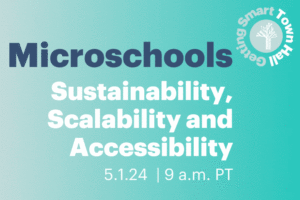
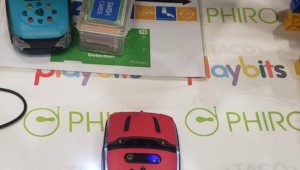
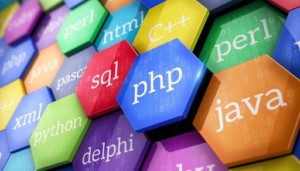
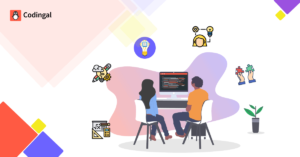
TechyKids Canada
This is such an informative post and would help many to understand the importance of introducing coding to kids. Thanks for sharing and explaining it so well!